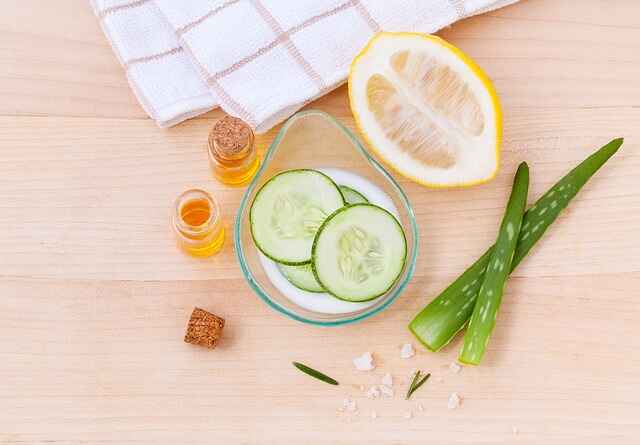What is rosacea?
Rosacea is a common skin condition that frequently starts with an easier-than-normal tendency to blush or flush. Rosacea is a chronic inflammatory skin disease that typically affects the nose and cheeks and results in flushed skin and a rash. It may also cause vision problems.
Additionally, it may result in tiny, pus-filled pimples. These symptoms and signs can last for weeks or months before subsiding. Rosacea is frequently misdiagnosed as acne, other skin conditions, or natural ruddiness.
Also Read: All About Acne: Types, Symptoms, Causes, Prevention, Home Remedies
Types of rosacea
The four types of rosacea are:
- Erythematotelangiectatic rosacea – It is recognized by persistent facial redness. Small blood vessels beneath the skin’s surface may enlarge and become visible; these symptoms frequently appear and then disappear.
- Papulopustular rosacea – It is characterized by pus-filled blemishes known as “whitehead” pustules and red, swollen bumps. These are commonly misidentified as acne and appear on the cheeks, chin, and forehead.
- Phymatous rosacea – Skin that has been affected by phymatous rosacea becomes thickened, scarred, bumpy, bloated, and occasionally discolored.
- Ocular rosacea – Eye symptoms of ocular rosacea make the eyes appear bloodshot or watery. Your eyes may feel burning or irritated in conjunction with this. Source

What Causes Rosacea
Rosacea’s specific cause is unknown to medical professionals. It might be a result of a mix of environmental and inherited factors. It is well-recognized that various factors can exacerbate your rosacea symptoms. These consist of:
- Consuming spicy food
- Consuming foods like cinnamon, chocolate, tomatoes, and citrus that contain the chemical cinnamaldehyde
- Sun exposure
- Stress
- Hot or cold weather
- Sipping hot tea or coffee
- Stress
- Addiction to alcohol or caffeine
- Strenuous exercise
Risk factors
You are more likely to get rosacea as a result of some factors than others such as:
- Found especially in women
- Can develop between the age of 30-40
- Family history
- Skin tone
- Exposure on Sun
- Having a history of Acne
- Occurs mostly among people of English, Scottish, Scandinavian, and Northern or Eastern European ancestry.
Symptoms
Rosacea can manifest itself in a variety of ways, depending on the individual. Most frequently, not all of the potential symptoms and indicators appear. Rosacea symptoms and signs include:
- Facial blushing or flushing (Source)
- Bumps and pimples
- Redness
- Visible blood vessels (Source)
- Eye irritation
- Burning Sensation (Source)
- Dry appearance
- Skin thickening
- Swelling Source
Diagnosis
Because there is no specific test for rosacea, doctors diagnose it based on the appearance of your skin and eyes, as well as your medical history. Tests may be ordered by your doctor to rule out other conditions that resemble rosacea.
If you have persistent facial or eye symptoms, consult your doctor or a skin specialist (dermatologist) for a diagnosis and appropriate treatment. Source
Treatment
There is no cure for rosacea, but there are ways to improve the appearance and feel of your skin. The most appropriate medications will be determined by the type of symptoms caused by rosacea:
- Anti-inflammatory effects of oral antibiotics are possible. They produce quicker results than topical ones.
- Eye drops can help relieve the symptoms of ocular rosacea.
- Brimonidine gel is useful for treating reddened skin.
- Nodules and pimples can be reduced with creams or gels containing the drugs azelaic acid, ivermectin, or metronidazole.
- Isotretinoin (Accutane) is an oral medication used to treat severe rosacea.
- Dermatologists can use laser treatment to help reduce telangiectasia or visible blood vessels. Source
Home remedies
Here are some home remedies for rosacea that actually work:
- Applying aloe vera gel
- Burdock is used as a supplement, extract, or food
- Use Chamomile for moisturizing the skin
- Coconut oil also helps as a moisturizer
- Comfrey is a plant that produces an allantoin compound. This compound has received attention for its ability to alleviate skin reactions.
- Another plant that is frequently mentioned as a natural rosacea remedy is feverfew.
- Green tea is high in antioxidants and is available as a tea as well as a herbal supplement.
- To treat rosacea, various essential oils can be applied topically.
- Niacinamide is a B vitamin that can be found in foods.
- Oatmeal has long been used as a home remedy for rosacea.
- Some types of honey, particularly raw honey, may be effective and simple rosacea relievers.
- Because of its anti-inflammatory properties, tea tree oil is beneficial for a wide range of skin conditions. It can also alleviate itching.
- Turmeric is a well-known anti-inflammatory herb that is useful for reducing rosacea.

Also Read: Benefits Of Turmeric: Health Facts, Nutritional Values, Risk And Precaution
Prevention of Rosacea
- Protecting your skin from the sun: One of the most frequent triggers of flare-ups for rosacea is exposure to the sun. After spending time in the sun outdoors, even persons with dark skin tones can have an outbreak. Find shade when you can, and wherever you can, wear protective gear like a wide-brimmed hat and UV-protected eyewear.
- Minimize stress: If stress makes your rosacea worse, pick a stress-relieving activity and engage in it frequently. Exercise, meditation, tai chi, and joining a support group for rosacea are all common ways to decompress.
- Protect your face from wind and cold: The best way to shield your skin from the elements is to wear a scarf. Avoid wool and other coarse-feeling textiles, which may trigger an allergic reaction, and instead look for scarves made of silk or acrylic.

Want to know about other skin disorders? Check out Skin Problems on Health Views Online.





